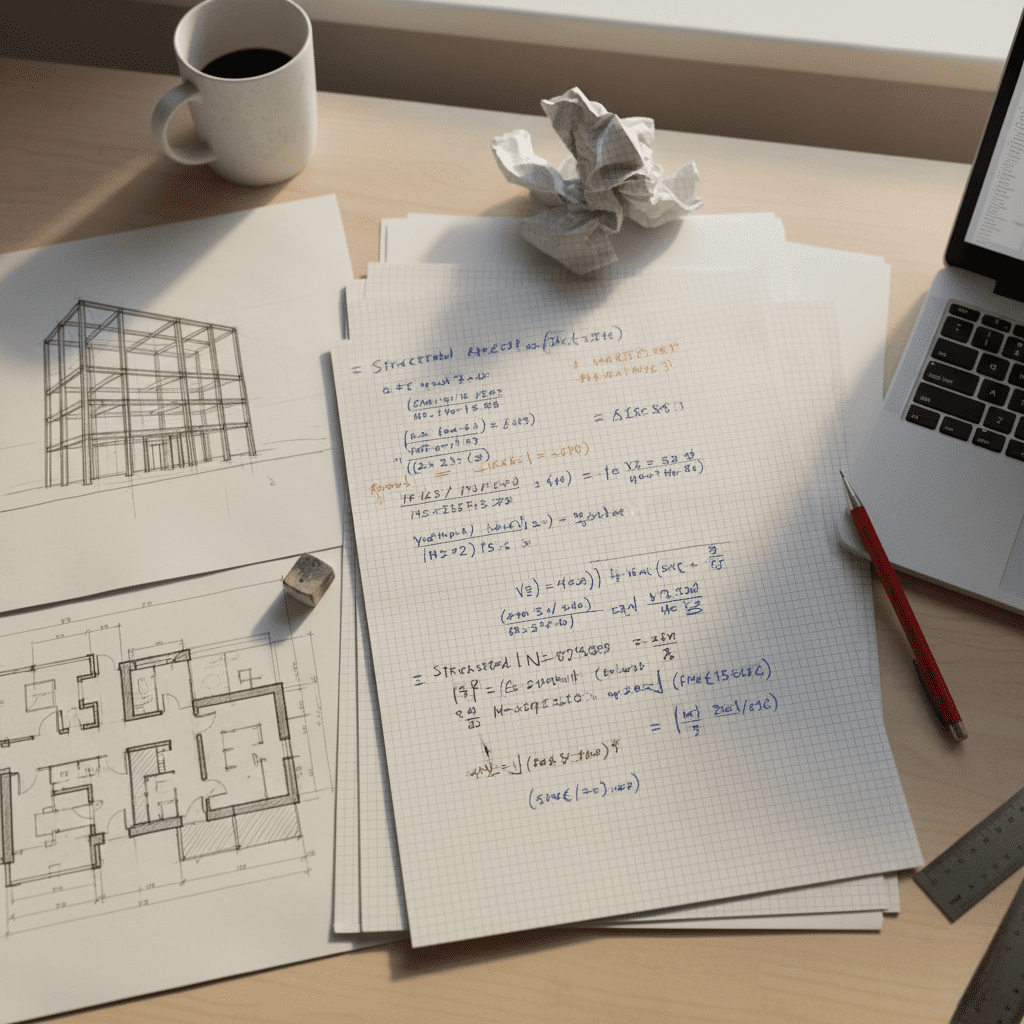
Structural Engineers for Home Extensions and Building Control
Structural engineers for home extensions provide the essential calculations that keep your new space safe and compliant. Planning an extension involves more than just architectural drawings; it requires specific engineering checks to satisfy Building Control. This guide explains the engineering process, the documents you need, and how we help get your project approved.
Why Building Control Requires Structural Engineers for Home Extensions
Building Control’s primary role is to ensure your new structure is stable and safe. They inspect critical elements like steel beams, foundations, roof supports and lintels.
A structural engineer produces the calculation pack that proves these elements work. Without this evidence, Building Control cannot sign off the project, which can lead to delays on site or issues when selling the property later.
Think of the architect as designing the layout, and the structural engineer as designing the strength. For official regulations, always check the Planning Portal – Building Regulations.
What Structural Engineers for Home Extensions Actually Do
Assessing Load-Bearing Walls
Before any load bearing wall removal, we check what sits above it. This includes floor joists, stud walls, roof struts and water tanks. We then calculate the steel beam needed to replace the wall safely.
Designing Steel Beams (RSJs)
For large openings, such as bi-fold doors or open-plan kitchens, we design steel beams. The calculations determine:
- The size and weight of the steel section
- Deflection limits to prevent cracking
- Padstone sizes to spread the load
- Connection details for columns
See our guide on steel beam design for more details.
Foundation Design
New walls add significant weight. We assess the ground conditions and design foundations that are deep and wide enough to prevent subsidence. This is critical if you are building near trees or on clay soil.
Roof Structure Checks
Whether you are building a flat roof or a pitched roof, the timber rafters and joists must be sized correctly. We check spans and specify bracing to stop the roof from spreading or sagging.
Ensuring Stability
Large glass openings reduce the amount of brickwork bracing the house. We calculate wind loading and lateral stability to ensure the extension remains rigid during storms.
When Building Control Requests Calculations
You will typically need engineering calculations for:
Removing Internal Walls
Creating open-plan spaces usually involves removing supporting masonry.
Installing Bi-Fold Doors
Wide openings require heavy-duty steel lintels to carry the floor and roof above.
Two-Storey Extensions
The extra weight requires careful foundation and steel frame design.
Building Near Trees
Tree roots affect soil moisture, often requiring deeper or specialised foundations.
Roof Alterations
Adding skylights, lanterns or changing from flat to pitched roofs changes the load distribution.
What The Inspector Checks On Site
Foundation Pour
They inspect the trench depth and soil quality before concrete goes in.
Oversite Preparation
Checking the damp-proof membrane and insulation layers.
Steelwork Installation
Verifying the beam size matches our calculations and that padstones are correctly bedded.
Roof Construction
Checking timber sizes, bracing, and strapping to the walls.
Completion
Final check of fire safety, insulation, and structural integrity.
What is in Your Structural Pack?
Our standard engineering pack for an extension includes:
1. Structural Calculations
Detailed maths proving beams, columns and foundations can take the load.
2. Mark-up Drawings
Plans showing where beams go and how they connect.
3. Connection Details
Specifications for bolts, welds and bearings.
4. Material Specifications
Grades of steel, concrete strength and timber classes.
5. Load Assessment
A summary of the weights used in the design.
This pack is what you hand to your builder and the Building Control officer.
Common Reasons for Building Control Rejection
Guessing Beam Sizes
Installing a beam without calculations often leads to rejection if it looks too small.
Missing Padstones
Beams sitting directly on brickwork can cause crushing. Padstones are essential.
Shallow Foundations
Digging foundations without checking soil type often results in the inspector asking for them to be deepened.
Lack of Lateral Support
Removing too many walls without adding steel frames can leave the house unstable.
Typical Engineering Fees for Extensions (2026)
Single Beam Design
£250–£500 depending on complexity.
Foundation Design
£250–£400 based on soil type and wall length.
Full Extension Pack
£600–£1,200. This covers beams, roof, foundations and stability checks.
Site Visits
Charged separately if required for complex issues.
Tips for a Smooth Approval
Submit Calculations Early
Send the engineering pack with your initial building notice.
Follow the Drawings
Ensure your builder sticks to the specified steel sizes.
Ask Questions
If the builder is unsure, check with the engineer before pouring concrete.
Keep Your Documents
Store the calculations safely; you will need them if you sell the house.
FAQ – Structural Engineers for Home Extensions
Do I always need a structural engineer?
For any extension involving beams, foundations or roof changes, yes.
Can my builder do the calculations?
No. Builders are not qualified or insured for design work.
How long does the design take?
Most extension packs are ready within 3–5 working days.
Will Building Control accept your work?
Yes. Our designs are fully compliant with UK Building Regulations.
Conclusion
Hiring competent structural engineers for home extensions protects your investment and ensures your build is safe. With professional calculations, your builder has a clear plan and Building Control can sign off the work without issues.
Get Your Structural Quote
We can provide a fixed fee for your extension calculations. Upload your architectural plans or sketches, and we will get back to you quickly.

